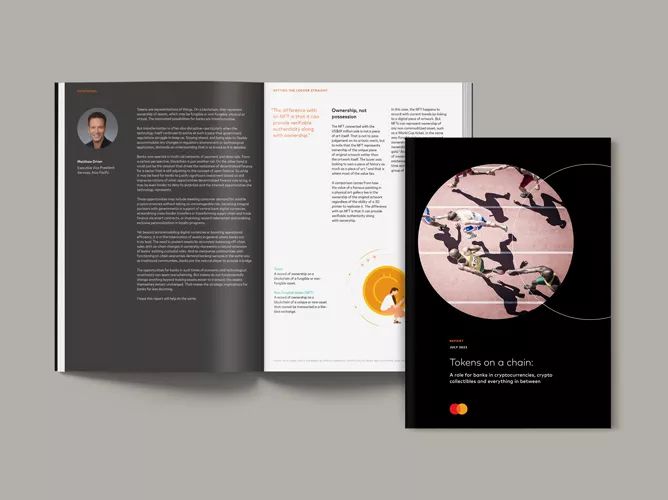By: Jo Ollier and Silvio Piserchia
Published: May 16, 2024 | Updated: June 06, 2024
Read time: 5 minutes
Tune in to a popular restaurant-based reality TV show, and you can marvel at restaurateurs strive to keep their businesses profitable.
A switch of setting to a well-run fintech company might not pull in the ratings quite like an ailing restaurant. But profitability is equally important to fintech companies wanting to avoid being just another flash in the fintech pan.
For a long time, fintech startups focused mostly on growth by wooing customers — and investors — with innovative offerings. The technological transformation of the financial sector was not going to happen overnight, and any attempt to compete was going to require substantial customer bases. Customer acquisition was all-important.
Yet, like for many a bustling restaurant on a busy street corner, somehow profit & loss (P&L) was not measuring up. And successful fintech companies are now turning to other recipes for success.
How do fintech startups succeed?
Oft-cited reasons tend to boil down to continued customer acquisition followed by customer retention and engagement — a trusted approach for any business.
The reasoning is good, but it is incomplete.
First, it comes from a time when bank account switching was cumbersome and customers were easier to retain. An ironic fintech lesson is that easy account applications also mean easy account switching. Customers enjoy a sample, often enticed by a sign-up perk, and then move on to the next fintech flavor of the month.
More importantly, the attraction, retention and engagement of customers does not automatically result in profitable customers.
Fintech companies build their brands on customer-facing considerations. But the real recipe for success calls for full insight into the nitty gritty of an organization and the folding in of two core ingredients: maximized revenue and managed costs.
1. Maximized revenue
Product diversification, global expansion, data-driven marketing — all are important ways to increase revenue in the wake of the findustrial revolution. And all focus on new customers and new products.
But what really tips the P&L scales is a focus on existing products and existing customers to maximize, rather than increase, revenue. Three areas warrant particular attention:
Revenue associated with interest rates
For neobanks with deposit products, offering just the right interest rate to customers on deposits can maximize profits. But going too high or too low can deter customers or waste money. Finding the right balance requires careful test & learn analytics.
The addition of lending products can then shift attention to the net interest margin (NIM) between interest paid by customers on loans versus the cost of funds, which includes the costs of bad debt. A customer value proposition (CVP) should consider interest rates in terms of duration, contract rates, existing customer promotions and market competition. And an optimized card portfolio should be based on the unit economics of individual products and account segmentations rather than overarching generalizations.
Revenue associated with non-interest income
Fixed fees, such as account maintenance and annual card fees, are one source of non-interest income. A variation is subscription-based pricing, such as charging monthly fees for access to a service, which can keep revenues more predictable.
Another income source is the use of an already engaged customer base for cross selling. Instead of batch prescreening, individual “prescreen of one” at the point of sale can boost non-interest income and customer lifetime value (CLV) by alerting customers of new products and services when they are at their most receptive.
Revenue associated with customer relationship management
Top-tier customers typically have high account balances and robust creditworthiness, but they do not necessarily generate interest income. They may also make more expensive purchases, but broader habitual usage across common purchases can sometimes mean more in terms of CLV.
The diversity means that one fixed product will seldom lead to profitability. But a diverse customer base does not necessarily warrant product diversification either. What matters is that products and pricing are appropriately tailored to boost loyalty. Sometimes, lower — or even loss-leader — pricing to foster relationships might support broader net income objectives despite reducing margins.
2. Managed costs
Costs are often crudely split into two categories: fixed and variable. The idea is that certain costs, such as one-off technological upgrades, are largely independent of business growth and so require less attention than variable costs.
The distinction is less clearcut in practice. It tends to boil down to stability: fixed costs being more stable over time than variable costs. But in a rapidly growing industry, even that distinction can easily blend:
Costs associated with size
Costs agreed on a variable basis at the outset should automatically create economies of scale as businesses grow. From the funding of loyalty programs to commissions to BIN sponsors, growth should result in lower unit costs and may also justify upfront investments in automation, such as generative AI. Growth may also justify the renegotiation of fixed costs on similar principles.
Alternatively, a “shrink to grow” strategy may be more appropriate. Pull out of less lucrative markets or retire underperforming products to focus resources instead on key areas. For example, a well-designed product strategy and CVP for existing customers might offer a better path to profitability than efforts to woo new customers.
Costs associated with disputes
An increase in overall transactions will naturally lead to an increase in disputed transactions. An inability to cope with mounting disputes can then lead to further costs. The addition of location data to dispute management helps by enriching transaction data with merchant details to provide clarity to consumers and to payment service providers.
Still, dispute management remains a delicate art. Fraud is costly, but so too is a drop in customer loyalty when a transaction is declined. Careful attention to the “false positive” rate, a measure of legitimate transactions erroneously declined, can ensure that payment authorization is not so conservative that it loses revenue and not so permissive that it is exposed to fraud.
Costs associated with compliance and reporting
On the national and even international level, business growth can trigger additional regulatory and licensing requirements from governments and other industry bodies. Meanwhile, on the individual level, sponsor banks and other BaaS partners might also impose additional audit and oversight demands. The more onerous the requirements, the more they may impact profitability if mismanaged.
Stress tests are commonly externally mandated to ensure financial institutions have sufficient capital reserves in case of trying economic times. But they function best when used internally to inform profitability and risk decisions at all times, which may include instances of account closures and delinquency. Robust approaches to management information and operations & compliance should also appeal to investors, who base 40% of their decision to participate in an IPO on non-financial considerations, according to a 2023 report by the consultancy EY.
A good backend for a good frontend
A separate treatment of maximized revenue and managed costs should not imply that they do not mutually reinforce each other.
On the contrary, the discussion shows how managed costs can maximize revenue if the potential return on investment is properly predicted and tracked. In turn, increased revenue can then justify the costs of new investment. A still nascent but rapidly emerging example is a future where “everyone is a fintech,” where continued investments in banking as a service (BaaS) are offset by the revenue from the white labeling that results.
In addition, a discussion of fintech profitability in terms of revenue and costs on the backend should not be separated off from existing focuses on customer acquisition, engagement and retention on the frontend. Basic viability comes from a minimum number of profitable customers and rapid enough growth to overcome fixed startup costs. Careful attention to P&L can help reach that state.
In short, a good frontend relies on a good backend. That rings as true for a fintech startup as for a restaurant. Frontends naturally hog the limelight, but reality TV shows focus on the backends of restaurants for good reason. The backend is where the real action happens.
Contact us to learn more about how we keep fintech profitable.











